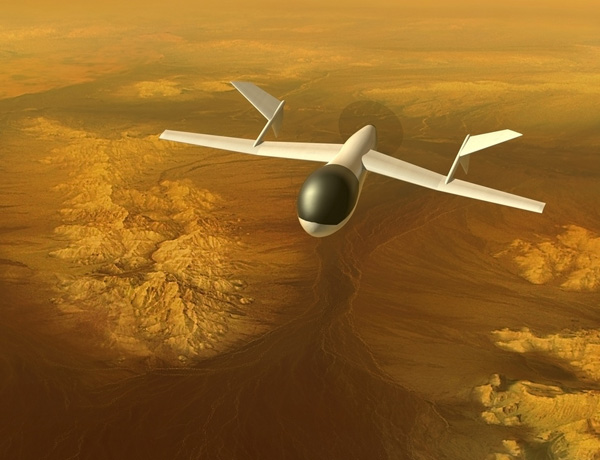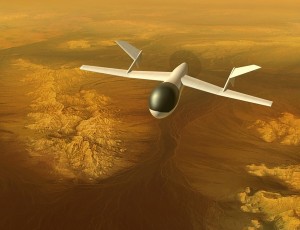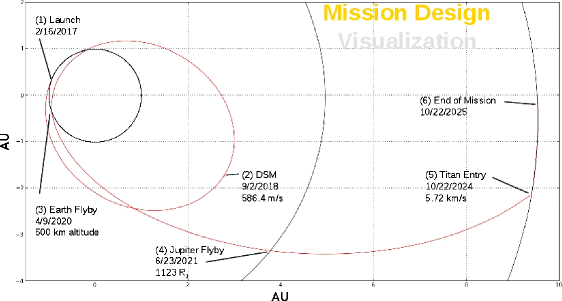An enticing mission proposal for the largest moon of Saturn, Titan, which is like a frozen Earth, with ice for rocks and methane/ethane (natural gas) for the liquid medium. Titan has a simplified, languid weather system because it is small compared to Earth (5,150 km vs 12,756 km) and colder (93.6 K vs 288.15 K.) It’s also much “drier” as most of the methane is vapour in the troposphere, unlike Earth water which is mostly liquid. In one sense Titan is more akin to the Hot, Desert Earth which will be our planet’s end-state after the Sun’s inexorable rise in luminosity has chased most of the oceans into space.
AVIATR is similar in size to NASA’s T-38N trainer/chase aircraft, but masses just ~116 kg and fits neatly in an aeroshell for aerocapture.
The nominal launch date is 2017, with a gravity assist from Earth and Jupiter to boost the vehicle all the way to Saturn. Even with those potent gravity-assists, which have sped both Galileo and Cassini-Huygens on their way, the trip takes 7 years, 8 months and 6 days.
It looks like a direct-entry into Titan’s atmosphere at 5.72 km/s, which might sound mild compared to the 11 km/s experienced by returning Apollo Command Modules, but is rather tricky into such a deep atmosphere. Thanks to Titan’s small size and low gravity, the equivalent of “400,000 feet” – nominal re-entry altitude – is something more like 4 million feet or 1270 km altitude. Would be easy to go astray when the target is still about half its radius away when you hit the atmosphere.
Once safely falling out of the sky, rather than blazing through, the aeroshell drops and the AV unfurls, with the main propeller starting up after maybe 8 years storage. No doubt some hours of anxious waiting is involved for Mission Control. Fortunately the dense, cold atmosphere is much more forgiving and the light gravity means the AVIATR AV drops and pulls out of the dive into its cruise orientation. For an Earth year the plucky AV (“Da Vinci”?) cruises the skys, maps the ground with RADAR, LIDAR and multi-spectral sensors, and a wholly new vision of Titan opens up before the hungry eyes of humans. To a Titanian, we humans are stuck on a hell planet, with high gravity (7 times Titan’s), mostly covered in molten rock, with a rarefied atmosphere of nitrogen contaminated by poisonous oxygen, almost no methane, no life-powering acetylene, and far, far too much sunshine.




